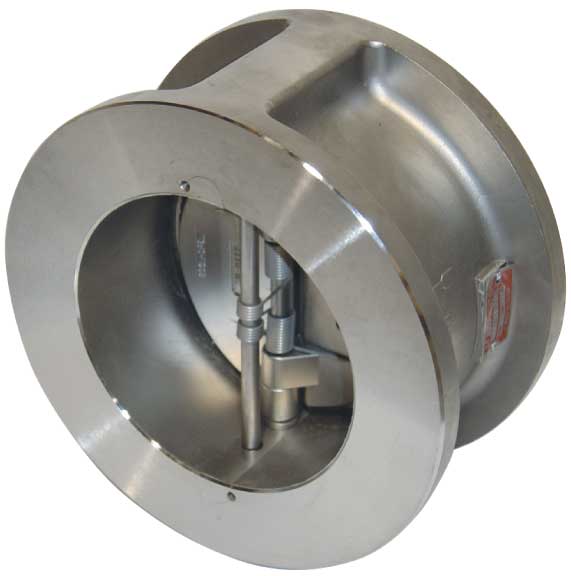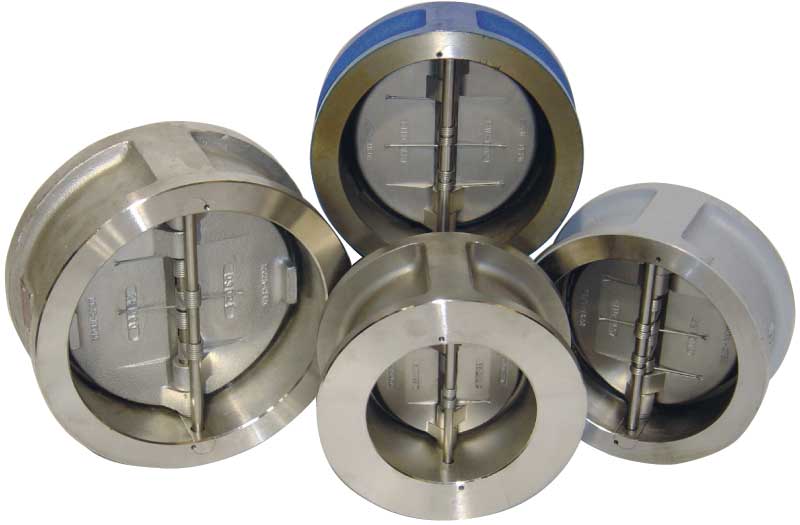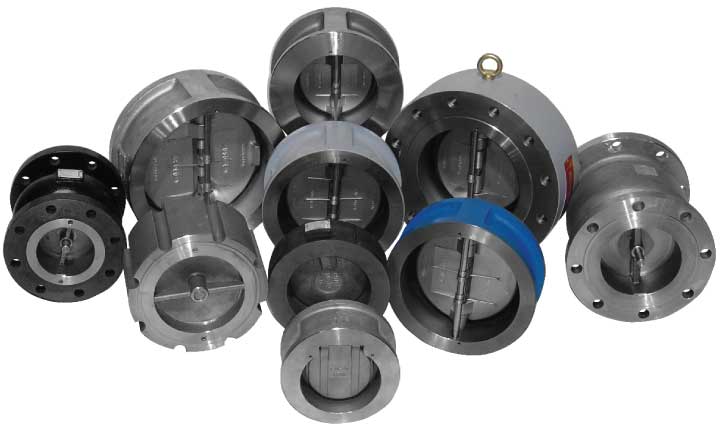Compact – Non-Slam – Tight Check Valves

If the rib profile and size are reduced or the pins are slimmed down, the valve might not provide the safety margin in operation which is one of the main reasons for having a wafer check valve in the first place.
Compact
Sure Flow Check meets the internationally accepted API 594 standard for steel valves. A 6” Class 150 valve has a face to face measurement of just 3” compared with a swing check valve’s 14” face to face dimension.
A Sure Flow Check fits completely inside the flange bolt PCD and therefore external installation is straightforward.

Non-Slam
Sure Flow Check is a non-slam check valve because it operates on flow cessation, not flow reversal. The normal position of the plates is closed, held against the seat by the unique spring design. As flow begins, the heels of the two plates are lifted off the seat face on the central rib.
This cracking pressure is less than 2 psi across most of the range. As flow increases, the plates then pivot against the spring pressure. Since the heels have already lifted off the rib seat there is no scrub or wear, either on the rib, body or plate seating surfaces. A pressure of only 4 psi is required to keep the plates fully open.
When flow stops and that pressure is removed the spring closes the plates. Flow reversal is then stopped by the closed Sure Flow Check valve and in fact any back pressure only serves to make the valve seal more tightly.

Tight
The long leg spring design – with a single anchor point – is a unique feature of the Sure Flow Check design. Coupled with floating plates for minimum seat wear and the right choice of seat to suit the service requirements, this gives the best combination to meet API 598 requirements.
The long spring leg ensures closing tension is applied to the right part of the plate while allowing the plate heels to float on opening. For valves 14” and larger, the spring is anchored to the stop pin to ensure that both plates open and close independently. If the spring is not anchored, then the opening of one plate transfers pressure through the spring to make it more difficult for the other plate to open.


